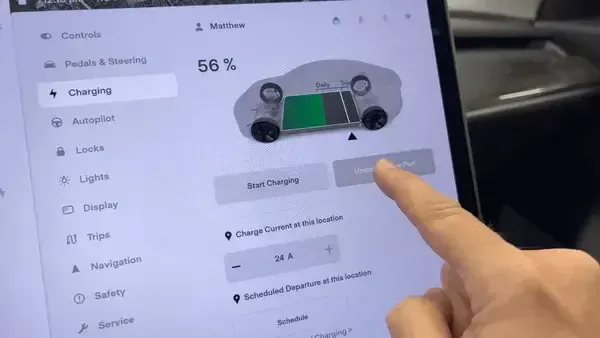Notifications

4 minutes, 27 seconds
-4 Views 0 Comments 0 Likes 0 Reviews

Why Charging Your EV to 80% Is Smarter—Not Just Safer
Introduction
As a leading EV charger manufacturer in China, Topper Company provides reliable electric vehicle charging equipment and comprehensive charging solutions.
As electric vehicles (EVs) become more common, charging them efficiently and safely is critical. One of the most important—but often misunderstood—practices is limiting your charge to 80%. While it might seem counterintuitive to not charge to 100%, this simple guideline can significantly improve your EV’s battery health, performance, and lifespan.
Let’s explore why the 80% rule matters, how different EV charging levels affect battery wear, and how to charge smarter for long-term savings.
Understanding EV Charging Levels
Level 1 (120V):
The slowest option, using a standard household outlet.
Time to 80%: 40–50 hours for BEVs; 5–6 hours for PHEVs
Best for: Occasional, overnight charging
Level 2 (240V):
Most common for home and public use.
Time to 80%: 4–10 hours for BEVs; 1–2 hours for PHEVs
Best for: Daily home charging and workplace/public stations
DC Fast Charging:
High-speed charging found at highway stops.
Time to 80%: 20 minutes to 1 hour for BEVs
Best for: Road trips and urgent top-ups
⚠️ Not ideal for daily use due to heat and stress on the battery.
Why Stop at 80%?
1. Longer Battery Life
EVs use lithium-ion batteries that degrade faster when frequently charged to 100%. Keeping your charge below 80% reduces chemical stress and preserves cell integrity, helping your battery maintain capacity and performance over time.
2. Safer Thermal Management
Charging to high levels—especially at high speeds—generates heat. Excessive heat can degrade battery components and pose safety risks. Most quality chargers monitor temperature and adjust output, but limiting charge levels helps naturally control thermal stress.
3. Smarter Charging Equipment
Always use certified chargers (UKCA, CE marked). Reliable Level 2 and DC chargers from trusted brands ensure consistent current, avoid overcharging, and include built-in safeguards.
4. DC Fast Charging ≠ Daily Charging
Fast charging is convenient but should be used sparingly. Rapid charging to 100% accelerates wear and shortens battery life. Use DC fast chargers only when necessary—like during travel or emergencies.
Charging Strategies by Lifestyle
Daily Commuters:
Use a Level 2 charger at home and stop at 80%. It’s fast, safe, and supports overnight charging.
Road Trippers:
It’s okay to charge to 100% for long trips—but limit this to occasional use.
Fleets or Commercial Vehicles:
Smart charging software can automate 80% limits, reduce electricity costs, and extend vehicle life.
The Benefits of Charging to 80%
Prolongs battery lifespan
Maintains consistent driving range
Reduces long-term maintenance costs
Minimizes environmental impact from early battery replacements
The Future of Smarter Charging
Modern EVs and chargers support smart charging features that let you:
Set charge limits
Monitor energy use
Schedule off-peak charging
Receive battery health alerts
Brands like Autel offer chargers with app control, load balancing, and advanced safety—making it easier than ever to follow the 80% rule.
Conclusion: Charge Smart, Drive Far
Treating your EV battery with care isn’t just about performance—it’s about longevity. Charging to 80% is one of the simplest, most effective ways to extend battery life, reduce wear, and keep your EV running like new.
Don’t just charge fast—charge smart. Learn more about Google SEO.
China EV Chargers EV Charger Manufacturer EV Charging Solutions

